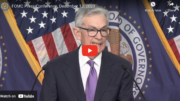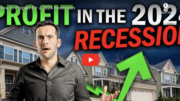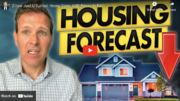Creating a 2,000-word summary of the transcript titled “Reverse Market Crash: The Worst Possible Economic Outcome” involves delving into the details presented by the speaker, Pat, and analyzing the complex economic phenomena he describes. The concept of a reverse market crash is central to the discussion, juxtaposed with traditional market crashes. Pat explores how such a scenario leads to the rich getting richer and the poor getting poorer, which is further exacerbated by government monetary policies.
Concept of Reverse Market Crash:
- Pat introduces the concept of a reverse market crash, where the market unexpectedly balloons, benefiting the wealthy at the expense of the lower and middle classes.
- He presents data from Pew Research to demonstrate the growing wealth disparity in the U.S., indicating that the wealth owned by upper-income groups increased from 60% in 1983 to 79% in 2016, while middle-income wealth dropped significantly.
Impact of Government Policies:
- Pat criticizes the government’s monetary policies, particularly the printing of money, which he argues does not genuinely benefit the poor. Instead, it funnels wealth upwards, as the poor tend to spend the money on goods and services, indirectly enriching the rich.
- He mentions Federal Reserve’s decision not to raise rates and suggests that if rates are lowered, it could lead to a surge in stock markets, benefiting the wealthy disproportionately.
Historical Case Studies:
- The video discusses several historical instances of hyperinflation and economic turmoil to illustrate the concept of a reverse market crash:
- Germany (Post-WWI): Germany experienced hyperinflation due to reparation payments and loss of productive territory, leading to a drastic devaluation of the German mark.
- Zimbabwe: Zimbabwe’s hyperinflation led to a stock market boom, but it was accompanied by astronomical inflation rates and interest rates.
- Argentina: Argentina’s welfare policies and government intervention led to hyperinflation and a surge in the stock market.
- Turkey: Similar patterns of inflation and stock market booms were observed in Turkey, driven by government policies.
- Iran: Iran also experienced a stock market surge alongside high inflation rates.
- Venezuela: Venezuela’s reliance on oil exports, governmental corruption, and sanctions led to hyperinflation and a volatile stock market.
Comparison with the United States:
- Pat draws parallels between these historical examples and the current U.S. situation. He points out the U.S. has also engaged in quantitative easing and suggests that if the U.S. government continues to intervene in the free market or imposes price controls, it could lead down a similar path.
- He highlights the recent inflation surge in the U.S. and the negative real interest rates as warning signs.
- Pat acknowledges that the U.S. is different from the countries in the case studies but warns against complacency. He emphasizes the need for fiscal responsibility and accountability in government spending to avoid a reverse market crash in the U.S.
Potential Future Scenarios and Recommendations:
- The video ends with Pat discussing potential future economic scenarios for the U.S., including the threat of a declining U.S. dollar and the possibility of a new global digital currency.
- He calls for public vigilance and political accountability to prevent reckless monetary policies and maintain the U.S.’s economic strength.
This comprehensive summary reflects the key points and arguments made in the video. It underscores the complex interplay between government policies, economic disparities, and market dynamics, illustrating how these factors can converge to create a reverse market crash. Pat’s analysis is rooted in historical examples, drawing parallels to current economic conditions and offering insights into potential future risks and strategies for mitigation.







